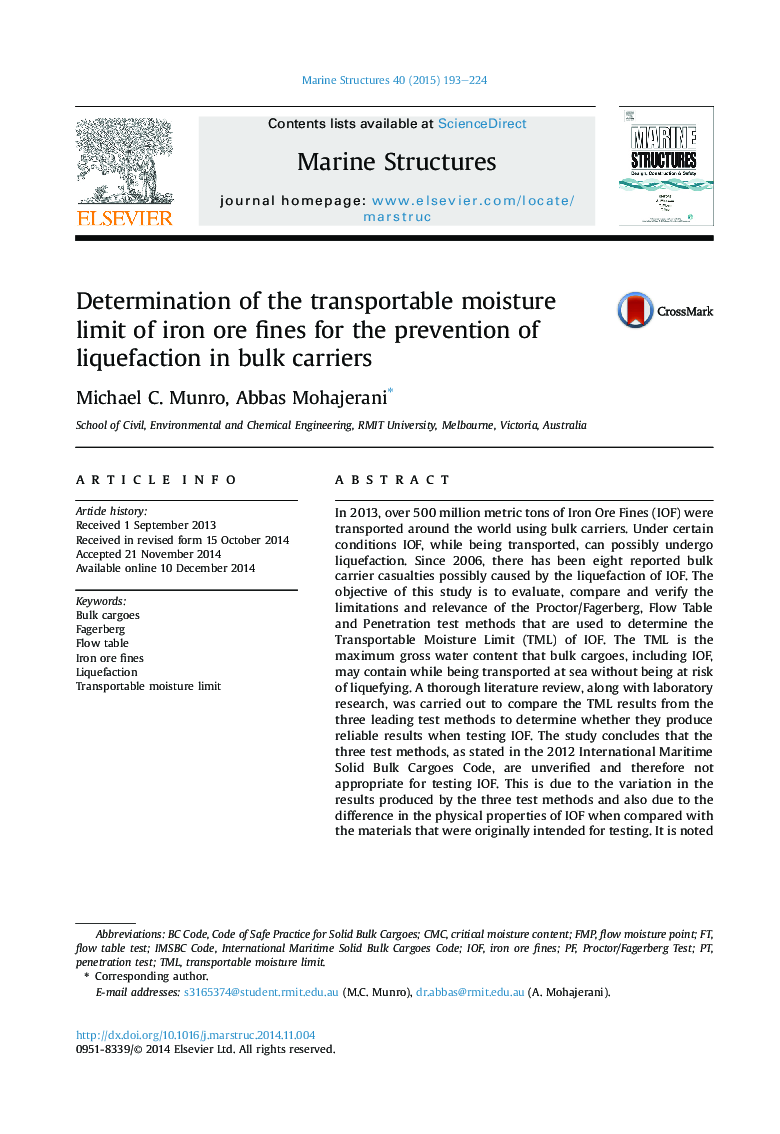| Article ID | Journal | Published Year | Pages | File Type |
|---|---|---|---|---|
| 294408 | Marine Structures | 2015 | 32 Pages |
•Mandatory transportable moisture limit (TML) testing required for iron ore fines.•Comprehensive literature review and research on TML testing of iron ore fines.•Significant variation in results from three TML test methods in 2012 IMSBC Code.•TML alone may not control potential liquefaction of iron ore fines in bulk carriers.•Discussion and recommendations for development of predictive methods and future research.
In 2013, over 500 million metric tons of Iron Ore Fines (IOF) were transported around the world using bulk carriers. Under certain conditions IOF, while being transported, can possibly undergo liquefaction. Since 2006, there has been eight reported bulk carrier casualties possibly caused by the liquefaction of IOF. The objective of this study is to evaluate, compare and verify the limitations and relevance of the Proctor/Fagerberg, Flow Table and Penetration test methods that are used to determine the Transportable Moisture Limit (TML) of IOF. The TML is the maximum gross water content that bulk cargoes, including IOF, may contain while being transported at sea without being at risk of liquefying. A thorough literature review, along with laboratory research, was carried out to compare the TML results from the three leading test methods to determine whether they produce reliable results when testing IOF. The study concludes that the three test methods, as stated in the 2012 International Maritime Solid Bulk Cargoes Code, are unverified and therefore not appropriate for testing IOF. This is due to the variation in the results produced by the three test methods and also due to the difference in the physical properties of IOF when compared with the materials that were originally intended for testing. It is noted that the TML alone may not control the potential liquefaction of IOF and further studies, regarding the physical properties and system variables, which cause the material to liquefy, are required to determine the liquefaction potential of IOF.
